India is a land of colourful culture, different landscapes and most importantly food that is certainly memorable. Every bit of India, in its spice-filled bustling streets of Mumbai and its magnificent palaces of Rajasthan, is of the language of spices. Coming here is not only the exploration of the sight; it is also the exploration of the taste, the enjoyment and the gastronomic adventure as vibrant as its history. It has delicious food, but it is also an ideal place to visit Failure to Infinity Adventure and Culture Activities in India, including colorful festivals and exciting outdoor trips that would show the land of its rich traditions and souls.
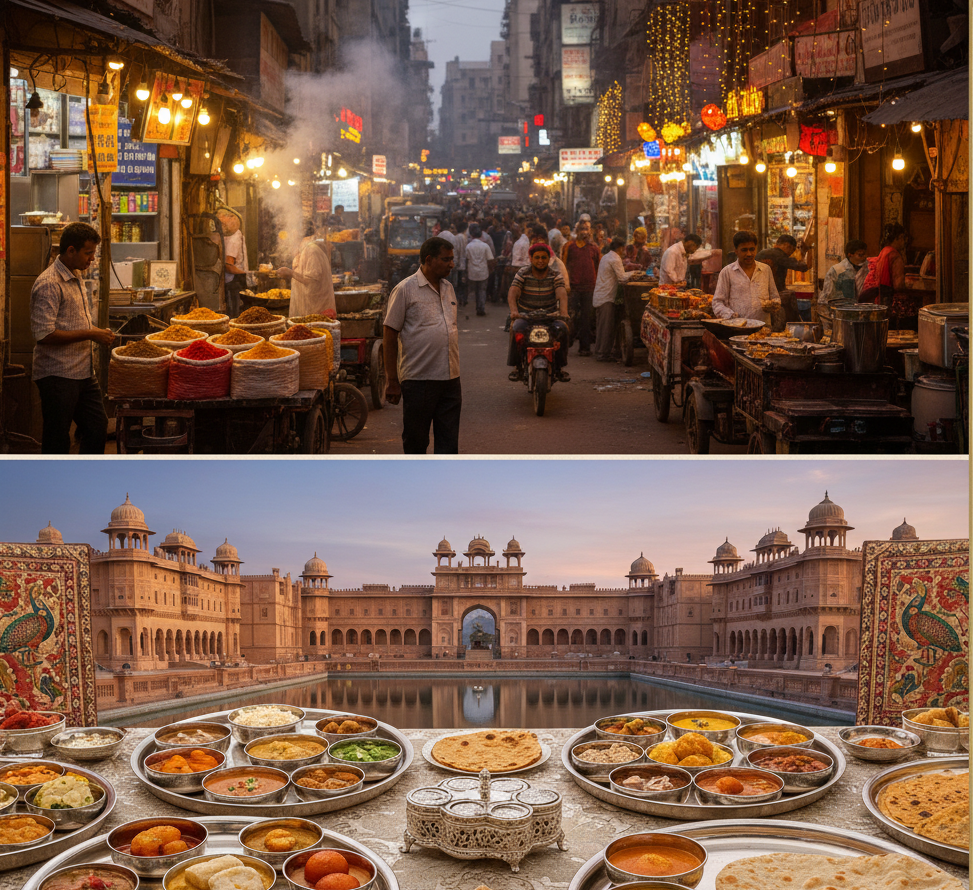
This guide will be a tour around the gastronomical landscape of India – street food to the palace kitchens of ancient dynasties. You may be a foodie, an adventure voyager or a traveler who is interested in world cuisines but willing to spend your time in India is sure to be an experience that will leave you content with your taste buds and bring out your wanderlust.
Indian street food is renowned in the global arena because of the daring taste, cheapness, and the diversity. All cities have their own specialties, local ingredients, culture and traditions.
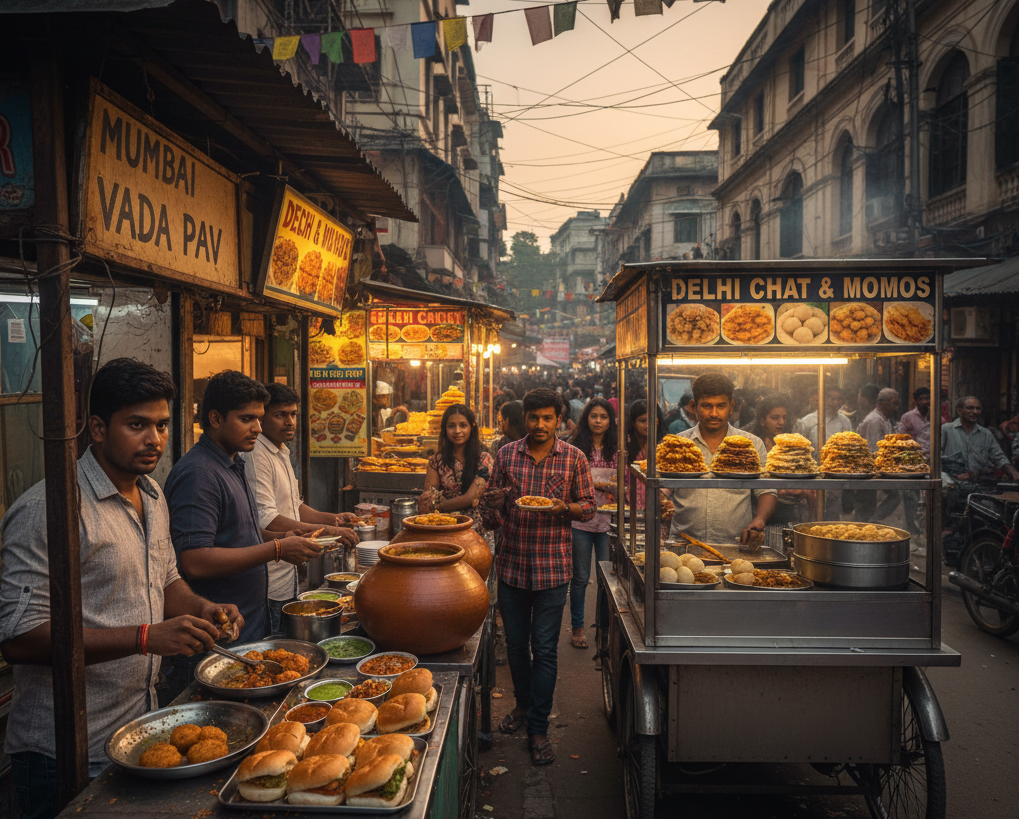
Mumbai, the city that never sleeps, is a heaven of street foods. The legendary Vada Pav, a potato fritter seasoned in spices served in a bun, has been labeled the Indian version of a burger. The other dish that should be tried is the Pav Bhaji, a blend of smashed vegetables that are fried in spices, and served on top of buns which are dried and topped with butter. Sipping such dishes through congested street corners will leave you with a true experience of the Mumbai vibrancy.
The streets of Delhi are full of stalls that are selling chaat, a blend of sweet, passionate and spicy flavours along with a bite-sized serving. The combinations are unlimited whether it is Aloo Tikki Chaat, Papdi Chaat and so on. Delhi also offers Northern style momos, soft dumplings which are stuffed with vegetables or meat as a part of the flavours introduced by their neighboring countries such as Tibet and Nepal.
In Kolkata, people fond of street foods can savor puchka also known as the pani puri, which is full of hot water and mashed potatoes in its Bengali form. Spiced meat or paneer Kathi Rolls are ideal when one is on the run. These meals are an expression of the fact that the city loves taste and fast meals.
The Indian cuisine is unbelievable, and every state presents a certain palette of tastes. Since there are the curries which are hot in the south and desserts are sweet in the east, the journey of exploring the cuisine of the region is on its own.
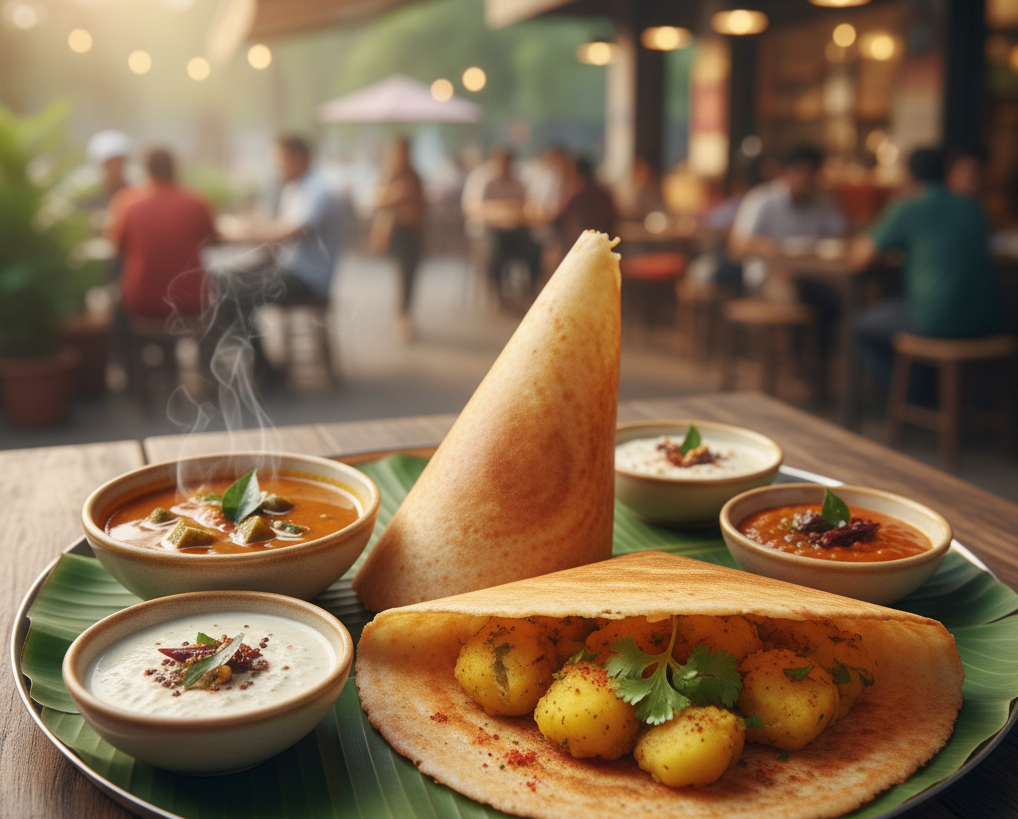
Southern India is renowned for Dosa which is a crisp crepe made of rice and stuffed with spiced potatoes topped with chutney. Sambar, which is a lentil-based vegetable stew, accompanies dosa. Such cities as Chennai, Bangalore, and Hyderabad provide the real South Indian breakfast which is tasty and substantial.
The seafood curries in Goa, which are characterized by use of coconut, tamarind, and spices are also delicious. Gujarat is an entirely different experience in terms of snacks with dhokla, a steamed cake made of gram flour, and farsan, a variety of crunchy bites. Every menu is a story about local products and food culture.
Odisha, West Bengal and Assam states of the Eastern block are known for fresh river fish cooked in mustard oil with sweet delicacies such as rasgulla and sandesh. The culture of desserts is very strong in Kolkata, especially, where confectioneries are centuries old.
Northern India is also associated with hearty meals and is full of rich gravies, tandoori meats and breads such as naan and roti. The north with its creamy butter chicken of Delhi, or paneer tikka of Punjab, is very hearty and gives the warming feeling.
No discussion about Indian cuisine is complete without mentioning spices. India’s culinary magic comes from the perfect blend of spices, creating complex layers of flavor that excite the palate.
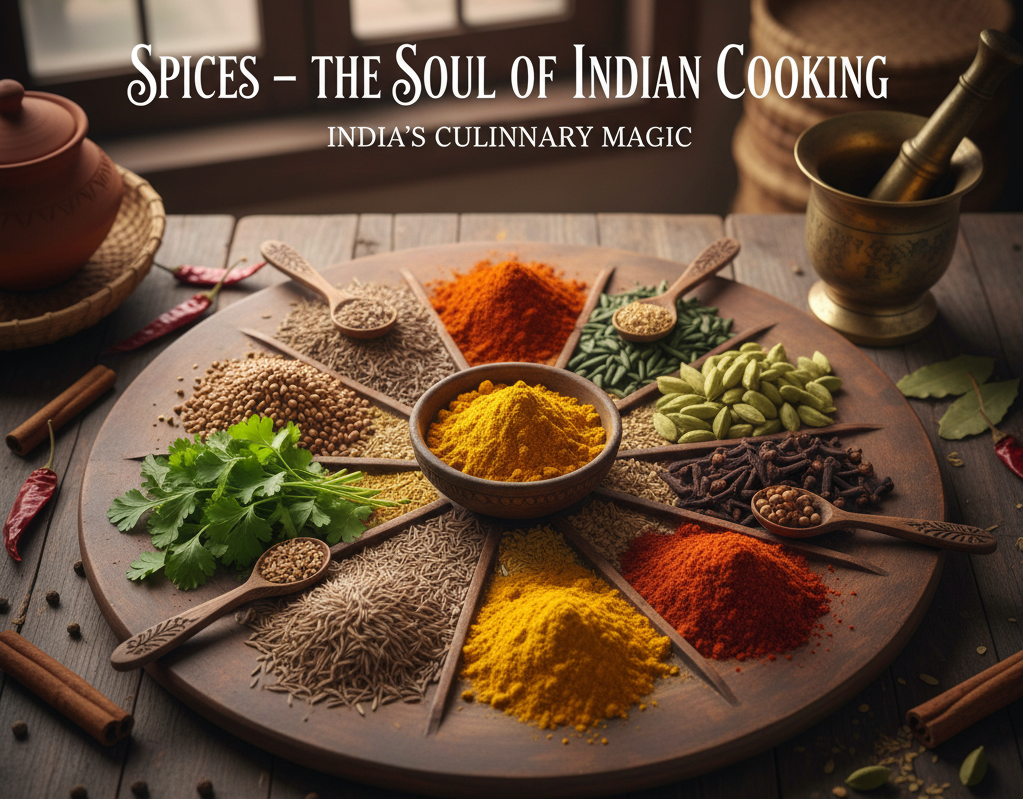
Spices are not just flavor enhancers; they are part of India’s culinary heritage, carefully balanced in every dish.
The royal kitchens in India are a wealth of food heritage. These kitchens which were used by the kings and queens have provided a view of the detailed preparations and the sophisticated tastes.
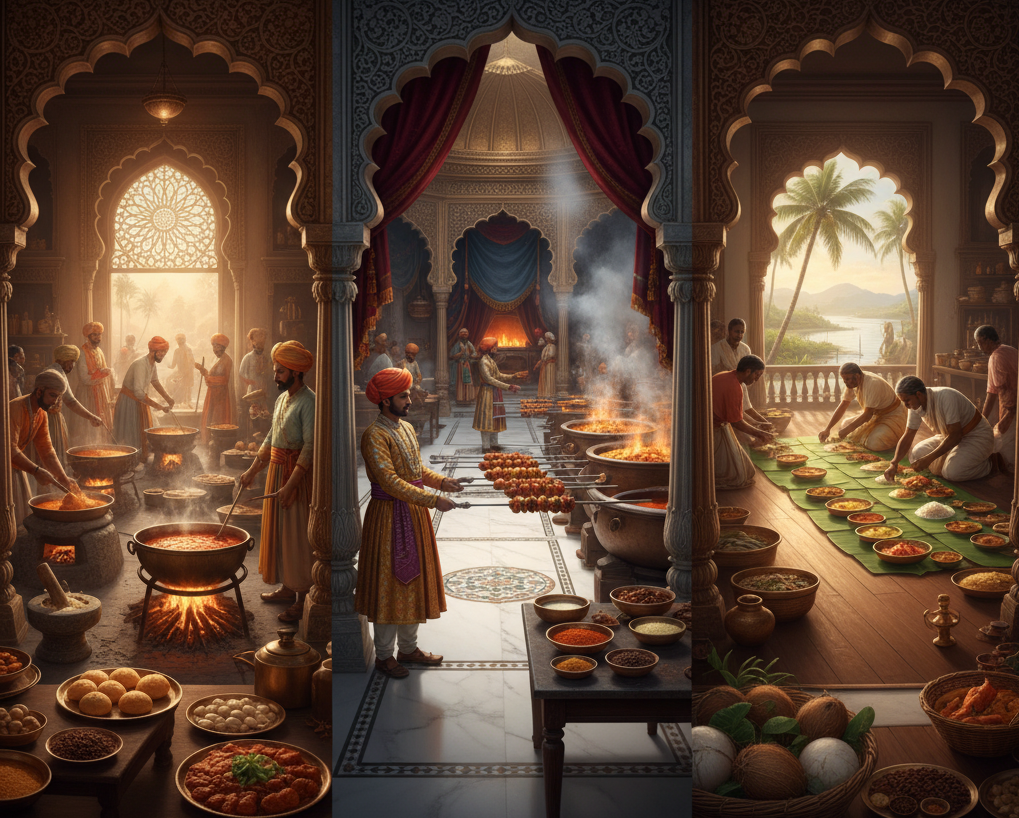
The food in the desert state of Rajasthan is plentiful. Dal Baati Churma is a mixture of lentils, baked balls of wheat and sweetened crushed wheat that is a balanced meal. Laal maas is a hot mutton curry, which represents the daring taste of the Rajasthani cuisine, usually made in ghee and spices.
Indian cuisine was deeply imprinted with the Mughal rulers. Awadhi and Hyderabadi biryani is also known in cities such as Lucknow and Hyderabad, and is a layered rice and meat preparation, which is cooked with aromatic spices. Kebabs, which are cooked slowly in tandoors, are also a favorite with the royalties.
Kerala is a state affected by the trade along the coasts with royal kitchens characterized by detailed meals referred to as sadhya served atop banana leaves, consisting of rice, curries, pickles, and desserts. The royal Kerala cuisine is characterized by seafood, coconuts, and spices.
Indian desserts are as diverse as its savory dishes. Each region offers unique sweets, often tied to festivals or local traditions.
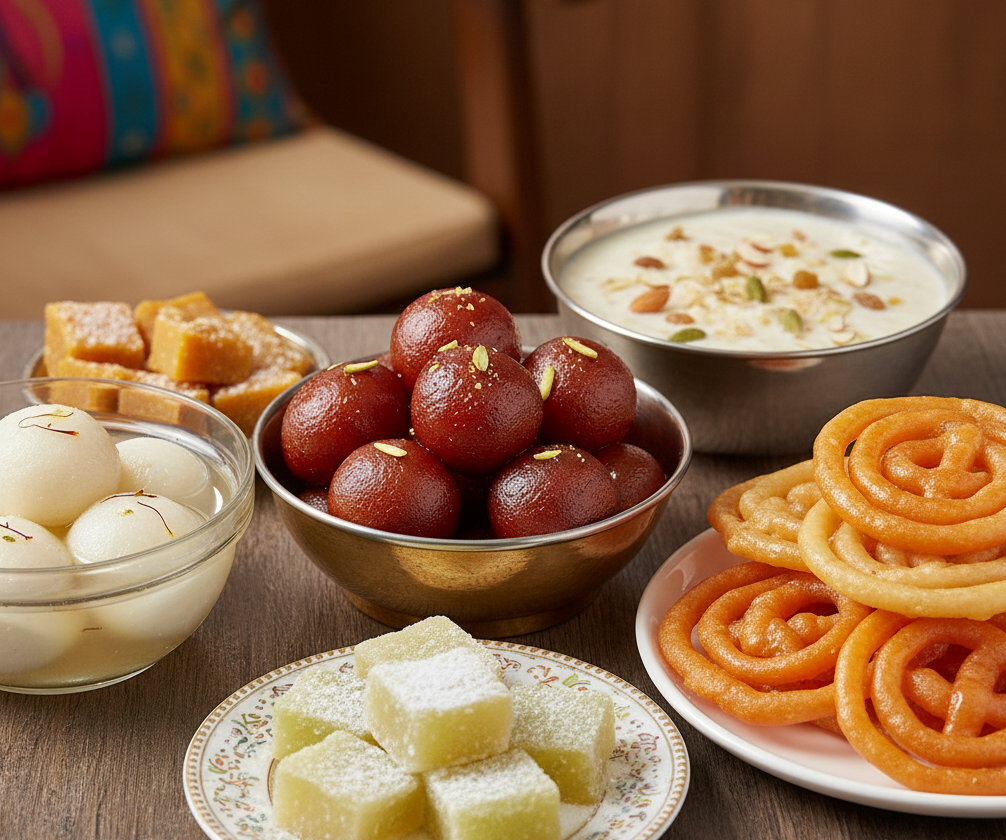
Desserts add a perfect conclusion to any Indian meal, balancing flavors with sweetness and richness.
India offers a variety of dining experiences, from casual street food to luxurious royal meals.
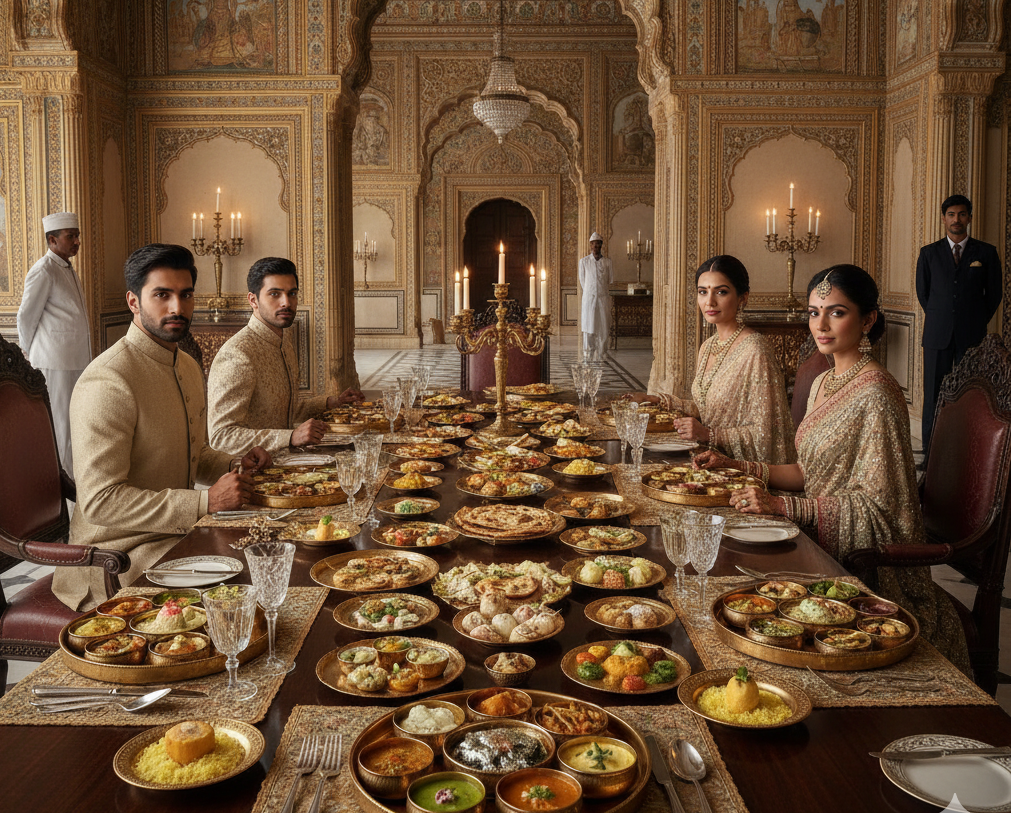
Every dining experience in India is a chance to explore its culinary diversity and cultural richness.
Indian festivals are incomplete without food. Special dishes mark each celebration:
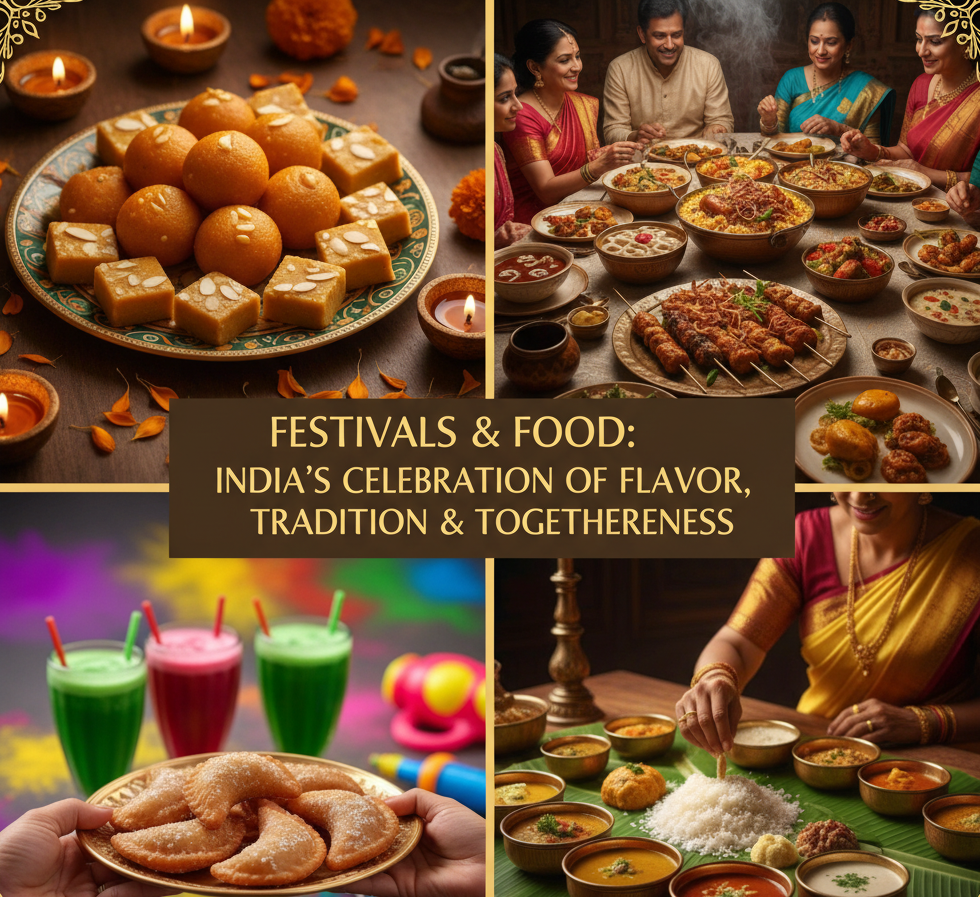
These festival foods bring communities together and highlight India’s love for flavors, tradition, and celebration.
Visiting local markets is a part of the culinary journey in India. Markets are bustling with colors, smells, and sounds, offering fresh ingredients and ready-to-eat snacks.
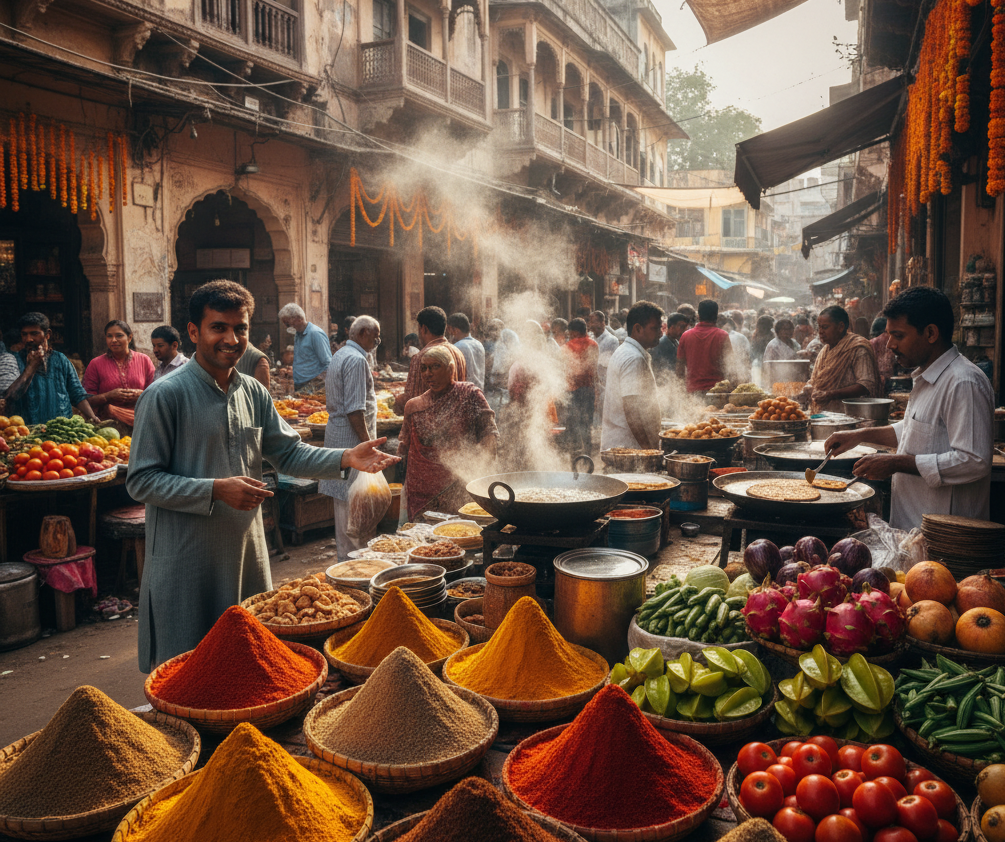
Exploring these markets is not just about food—it’s about immersing yourself in India’s culture.
Food lovers can also take cooking lessons and food tours in India, where they can also be taught the local recipes and cooking methods.
Rajasthani Cooking Classes: Master dal bati churma and laal maas.
Kerala Spice Tours: Visit spice plantations and prepare seafood delicacies.
Bengali Sweet Making: Direct practice of making sweets such as rasgulla and sandesh.
These experiences enhance your knowledge on Indian flavors besides enabling you to carry with you a piece of India home in terms of recipes.
If this delicious journey through India has tempted you to visit, Applying for an eVisa to India is a smooth and simple process. Travelers from many countries can apply online without long paperwork or visits to offices. Here’s a step-by-step guide to make it easy for you:
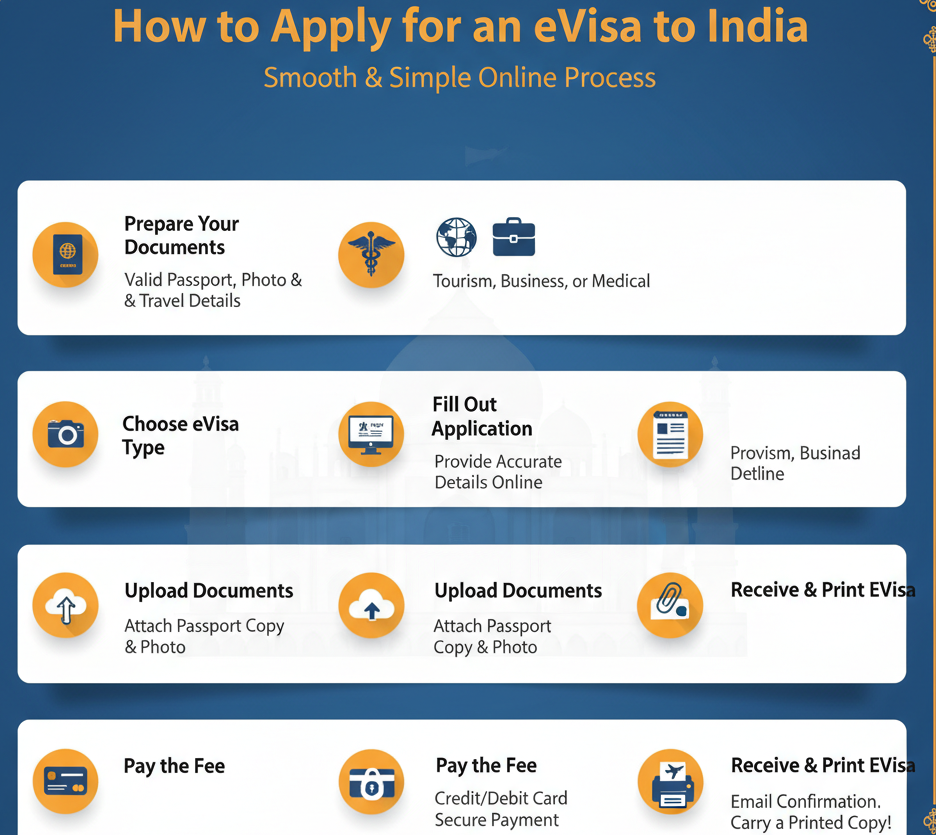
The process is straightforward and user-friendly, making it easier for travelers to focus on what matters most — exploring India’s incredible culture and cuisine.
India offers several types of eVisas to suit different travel needs. Here are the main categories:
Perfect for travelers coming to explore India’s beauty, traditions, and food culture. This visa allows sightseeing, visiting family or friends, and enjoying leisure travel experiences.
Designed for business travelers attending meetings, trade events, or exploring investment opportunities in India.
For those seeking medical treatment or specialized healthcare in India’s renowned hospitals.
Available for family members or caregivers accompanying a patient traveling under a medical visa.
Issued for participants attending conferences or seminars hosted by recognized organizations.
Each eVisa type has its own validity period and conditions, so it’s important to select the right one based on your purpose of visit.
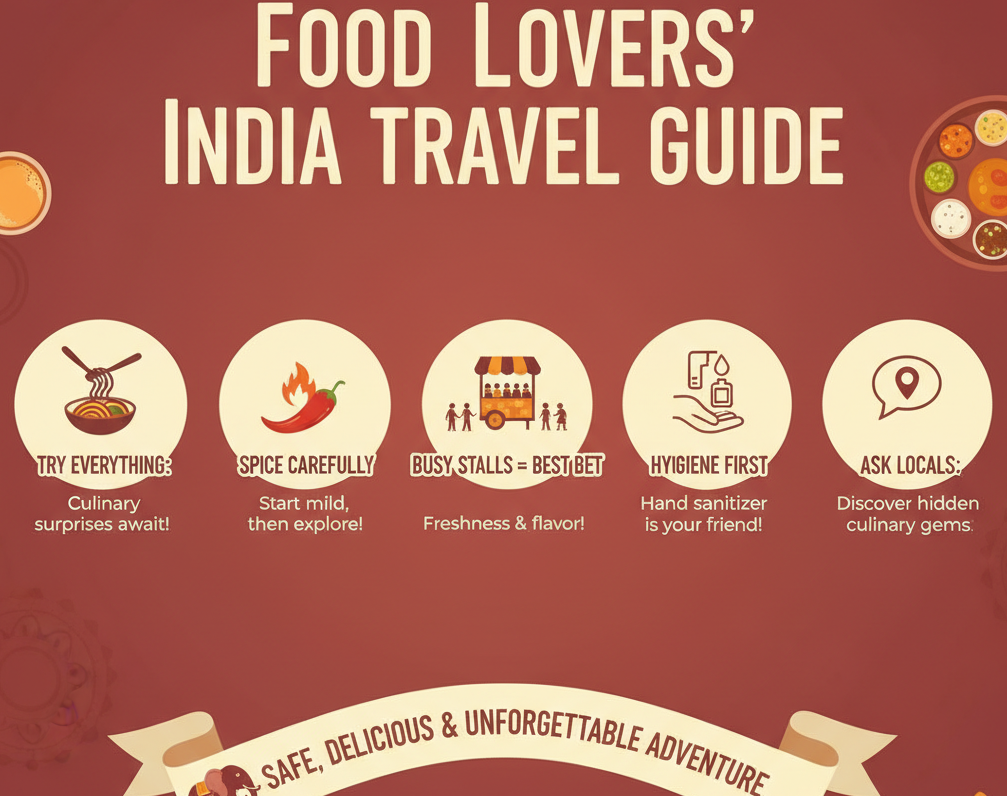
Following these tips ensures a safe, enjoyable, and delicious culinary adventure.
Indian cuisine is not only about the taste, but it also incorporates history, geography and culture. Each of the dishes has a story behind it, of royal cuisines, street sellers, family customs, and even centuries of culinary development. A tour of the food industry in India is a trip through its soul and heart, linking the people together with their likes and tastes.
Street food snacks and royal dishes, the Indian cuisine is a festival of diversity, innovativeness, and taste passion.
An Indian food trip is one adventure of its kind. India is diverse in terms of food so the bustling streets with its snacks and the royal kitchens with their complex meals represent the culture, history, and people.
You can enjoy chats in Delhi, biryani in Hyderabad, and desserts in Kolkata and the meal is a memory that will be made. When it comes to exploring Indian cuisine, it is not only about eating, but also about life and traditions, a lot of splendor of this country who glorifies taste in every step.
then stuff your stomach, and be willing to try new flavours, and go forth upon an Indian tour–a tour which will be ever remembered, and ever fondly remembered, by both your memory and your palate.